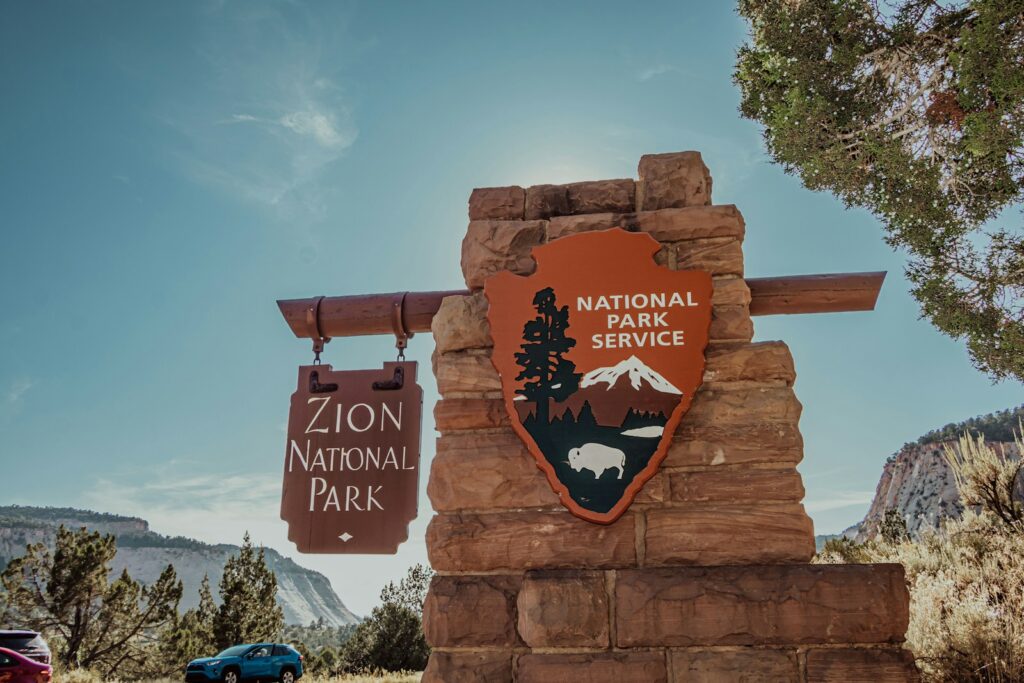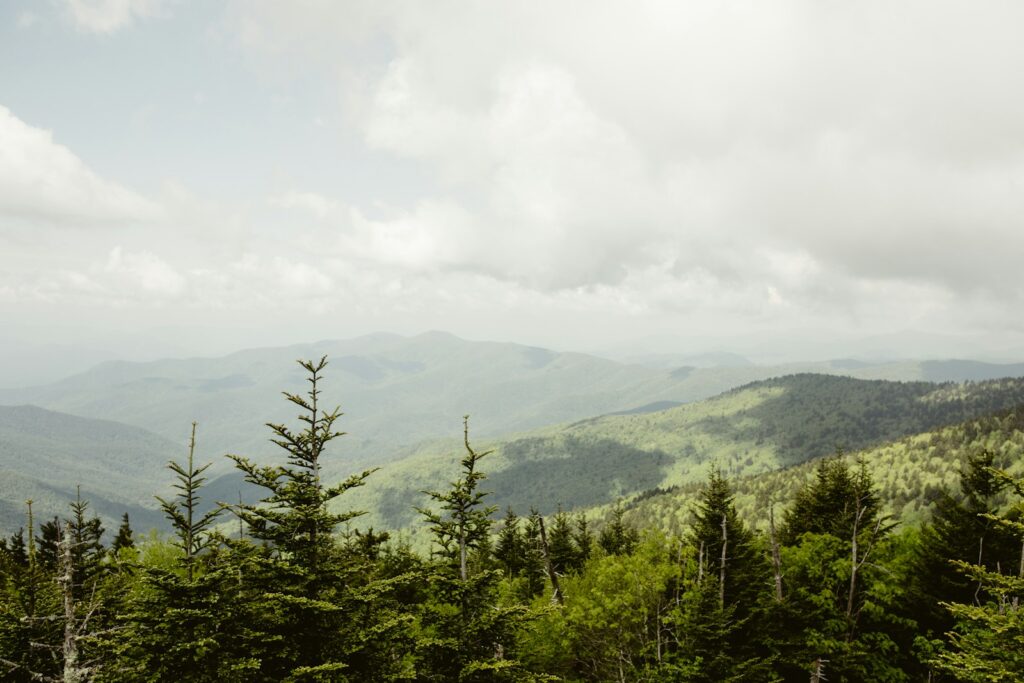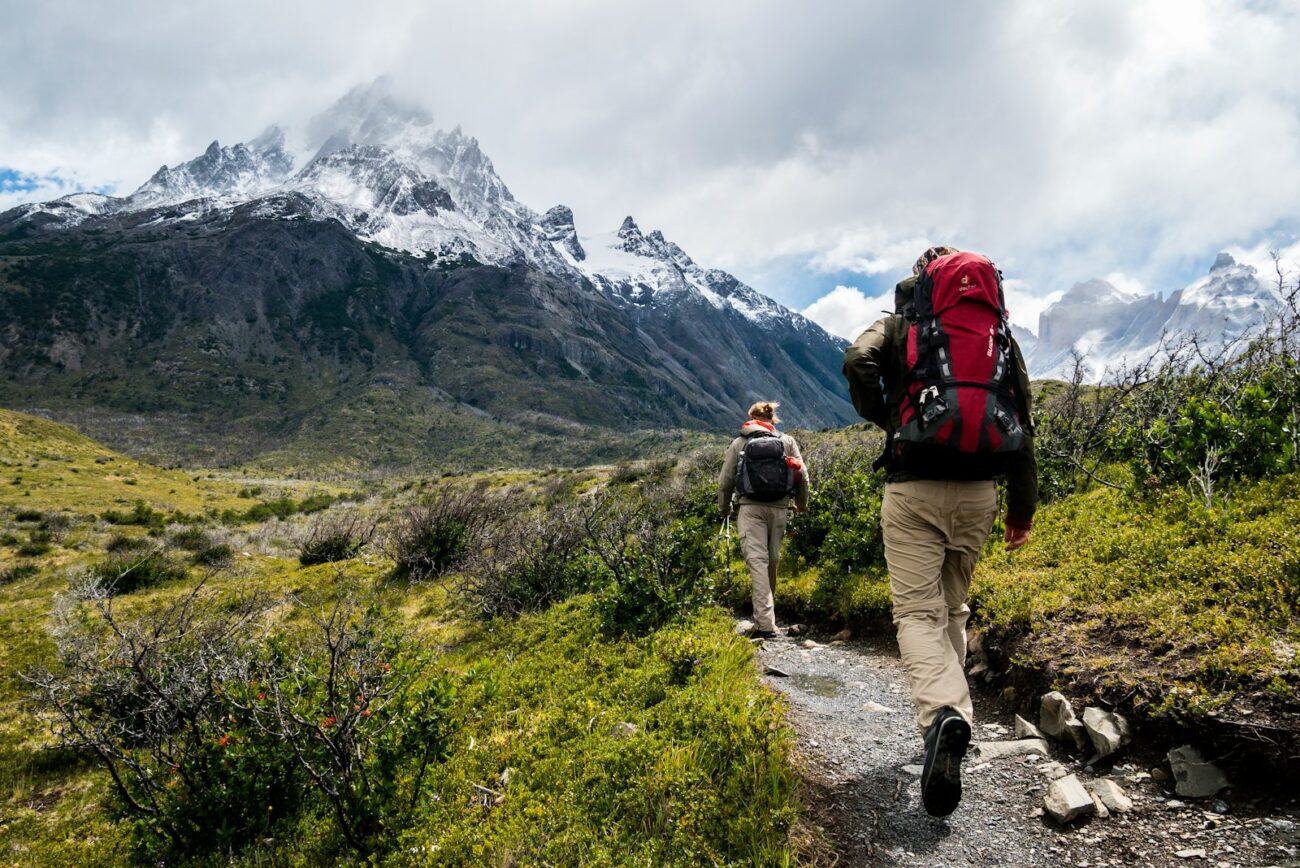America’s national parks represent the crown jewels of our natural heritage, preserving landscapes of breathtaking diversity and beauty. From ancient forests and towering mountains to vast deserts and pristine coastlines, these protected areas showcase the remarkable ecological and geological wonders that define our nation. Beyond their stunning vistas, these parks tell the story of America itself—its natural history, cultural significance, and environmental consciousness. While the National Park Service manages over 400 sites across the country, certain parks stand out for their iconic status and exceptional experiences. This article highlights 15 national parks that every American should experience at least once in their lifetime, each offering unique adventures and unforgettable moments that connect us to the wild heart of America.
1. Yellowstone National Park (Wyoming, Montana, Idaho)

Established in 1872 as America’s first national park, Yellowstone remains a testament to conservation foresight and natural wonder. The park’s 2.2 million acres encompass a stunning variety of geothermal features, including Old Faithful, the reliable geyser that has captivated visitors for generations. Beyond its volcanic wonders, Yellowstone provides sanctuary to an impressive array of wildlife, including grizzly bears, wolves, bison, and elk, offering some of the best wildlife viewing in North America. The Grand Canyon of the Yellowstone River, with its dramatic golden cliffs and thundering waterfalls, provides yet another dimension to the park’s diverse attractions. Seasons transform the landscape dramatically, from snow-blanketed winter wonderlands to vibrant summer meadows filled with wildflowers, making Yellowstone a park worth revisiting throughout your lifetime.
2. Grand Canyon National Park (Arizona)

No photograph or description fully prepares visitors for their first glimpse of the Grand Canyon, a geological masterpiece carved by the Colorado River over millions of years. Standing at the rim, gazing across the canyon’s immense width (up to 18 miles) and depth (over a mile), many experience a profound sense of awe that transcends mere sightseeing. The layers of multicolored rock tell Earth’s story across nearly two billion years of geological history, creating what many consider the most spectacular erosional feature on the planet. Hiking trails like Bright Angel and South Kaibab offer adventurous visitors the opportunity to descend into the canyon, where perspectives shift dramatically and ancient rocks reveal their secrets up close. The park’s North Rim provides a less-visited alternative with cooler temperatures and different viewpoints, while sunrise and sunset transform the entire canyon with an ever-changing palette of colors that photographers chase endlessly.
3. Yosemite National Park (California)

Yosemite stands as a monument to the power of preservation, saved for future generations through the efforts of naturalist John Muir and others who recognized its irreplaceable value. The park’s dramatic granite cliffs and formations, including El Capitan and Half Dome, have become iconic symbols of American wilderness and challenging objectives for rock climbers from around the world. Yosemite Valley’s waterfalls rank among America’s highest and most spectacular, with Yosemite Falls plunging 2,425 feet in three dramatic sections that roar with spring snowmelt. Beyond the famous valley, Tuolumne Meadows offers high-country splendor with alpine lakes, granite domes, and expansive meadows filled with wildflowers during the brief mountain summer. Ancient giant sequoias in the Mariposa Grove provide yet another dimension to Yosemite’s magnificence, with trees stretching nearly 300 feet skyward and living for thousands of years.
4. Zion National Park (Utah)

Unlike many parks viewed from above, Zion invites visitors to experience its wonders from the bottom up, walking alongside the Virgin River through a canyon of soaring red and cream-colored cliffs that reach toward the sky. The park’s unusual perspective creates an intimate relationship with the landscape, as massive walls of Navajo sandstone tower overhead, streaked with desert varnish and catching light in ways that transform their appearance throughout the day. Adventurous hikers can tackle the park’s signature trails like Angels Landing, which follows a narrow fin of rock with 1,000-foot dropoffs on either side, or The Narrows, where hikers wade upstream through a slot canyon with walls that narrow to just 20 feet apart while rising hundreds of feet high. Zion’s diverse ecosystem supports surprising biodiversity, from desert bighorn sheep to lush hanging gardens that cling to seeping canyon walls, creating microhabitats of unexpected greenery amid the arid landscape.
5. Glacier National Park (Montana)

Known as the “Crown of the Continent,” Glacier preserves some of the most spectacular alpine scenery in America, with jagged peaks, pristine lakes, and remnant glaciers that carved this landscape but are now rapidly disappearing due to climate change. The park’s signature drive along Going-to-the-Sun Road ranks among America’s most breathtaking mountain highways, crossing the Continental Divide at Logan Pass while offering heart-stopping views and wildlife sightings. More than 700 miles of trails provide access to Glacier’s backcountry, where hikers might encounter grizzly bears, mountain goats, or rare wolverines in a landscape that represents one of the most complete and intact ecosystems in the temperate world. The park’s cultural significance extends to its importance for Native American tribes, particularly the Blackfeet Nation, whose reservation borders the eastern side and whose traditional territory encompasses much of what is now the park.
6. Grand Teton National Park (Wyoming)

Few mountain ranges in America rise as dramatically as the Tetons, which thrust skyward from the valley floor without foothills, creating one of the most photographed landscapes in the national park system. The centerpiece of the park, the Grand Teton itself, soars to 13,775 feet, anchoring a rugged range that challenges mountaineers and captivates photographers with its jagged profile and ever-changing play of light and shadow. String and Jenny Lakes reflect the mountains in their crystal-clear waters, creating perfect mirror images on calm mornings and offering recreational opportunities from kayaking to fishing. Wildlife abounds throughout the park, with moose wading in marshy areas, elk gathering in sagebrush flats, and bison roaming the valley floor against the dramatic mountain backdrop. The historic Mormon Row barns and homesteads provide cultural counterpoints to the natural scenery, offering glimpses into pioneer life beneath the towering peaks.
7. Olympic National Park (Washington)

Olympic National Park stands as a monument to ecological diversity, encompassing three distinct ecosystems within its boundaries: wild Pacific coastline, temperate rainforest, and alpine highlands. The Hoh Rain Forest receives up to 14 feet of precipitation annually, creating an otherworldly landscape where massive Sitka spruce and western hemlock trees drip with mosses and ferns carpet the forest floor in a thousand shades of green. Along the park’s 73-mile coastline, tide pools teem with colorful marine life, enormous drift logs line the beaches, and sea stacks rise dramatically offshore, creating some of the most pristine shoreline remaining in the continental United States. Hurricane Ridge provides access to the park’s alpine zone, where visitors can gaze across the jagged Olympic Mountains and, on clear days, see all the way to Canada across the Strait of Juan de Fuca. The park’s remote location has allowed it to maintain extraordinary biodiversity, including several endemic species found nowhere else on Earth.
8. Acadia National Park (Maine)

As the first national park established east of the Mississippi River, Acadia preserves a rugged slice of Maine’s coastline where mountains quite literally meet the sea. The park’s 27-mile Park Loop Road connects many of its highlights, including Ocean Drive with crashing Atlantic waves, Thunder Hole where incoming tide creates booming resonance, and the summit of Cadillac Mountain, the first place in the United States to receive morning sunlight for much of the year. More than 120 miles of historic hiking trails crisscross the park, many featuring granite steps and iron rungs installed by skilled craftsmen in the early 20th century, creating access to spectacular viewpoints and secluded coves. Acadia’s unique cultural history includes its development as a summer retreat for America’s wealthy industrialists, who built elaborate “cottages” and later donated thousands of acres to create the park we enjoy today. The surrounding communities, particularly Bar Harbor, complement the park experience with New England charm and some of the finest seafood dining in America.
9. Great Smoky Mountains National Park (Tennessee, North Carolina)

America’s most visited national park draws over 12 million visitors annually to experience its mist-shrouded mountains, diverse forests, and Appalachian cultural heritage. The park protects one of the world’s finest examples of temperate deciduous forest, with over 100 native tree species creating spectacular autumn color displays that attract visitors from around the world. Historic structures preserved throughout the park, including log cabins, barns, churches, and grist mills, tell the story of the Southern Appalachian mountain people who called this land home before it became a national park. Wildlife viewing opportunities abound, with healthy populations of black bears, white-tailed deer, and over 1,500 black bears roaming the park’s diverse habitats. The park’s elevation gradient creates remarkable biodiversity, with species ranging from those typical of the deep South at lower elevations to northern species found on the highest peaks, making it an internationally recognized UNESCO World Heritage Site.
10. Rocky Mountain National Park (Colorado)

Rising more than 12,000 feet above sea level, Trail Ridge Road winds across Rocky Mountain National Park’s alpine tundra, earning its nickname as the “Highway to the Sky” and providing access to breathtaking vistas across one of America’s premier mountain landscapes. The park preserves a spectacular section of the Southern Rocky Mountains, where 78 peaks exceed 12,000 feet and ecosystems range from montane forests to alpine tundra where tiny plants survive in a harsh environment of wind, cold, and intense ultraviolet radiation. Elk herds gather in the park’s lower meadows during fall rut season, bugling males creating an unforgettable soundtrack to the changing aspens and early snow dustings on the high peaks. Hundreds of miles of trails offer opportunities for every level of hiker, from accessible lakeside strolls to challenging summit routes that attract mountaineers seeking to conquer peaks like Longs Peak, the park’s only “fourteener” at 14,259 feet.
11. Everglades National Park (Florida)

Unlike parks that preserve dramatic geological features, Everglades National Park protects a vast, subtle “river of grass” that forms the largest tropical wilderness in the United States. This unique wetland ecosystem moves water slowly southward across a limestone shelf, creating habitats for an astonishing array of wildlife, including American alligators, endangered Florida panthers, manatees, and over 360 bird species. Airboat tours provide thrilling access to portions of this watery wilderness, while elevated boardwalks allow visitors to venture safely into mangrove forests and sawgrass prairies to observe wildlife up close. The park serves as a critical environmental barometer, reflecting the health of South Florida’s complex water systems and the impacts of human development and climate change on sensitive ecosystems. Sunset at Flamingo, where the “river of grass” meets Florida Bay, offers one of the most spectacular color displays in the national park system, with reflected light creating a 360-degree canvas of ever-changing hues.
12. Arches National Park (Utah)

More than 2,000 natural stone arches punctuate the red rock landscape of Arches National Park, creating the highest concentration of these geological wonders found anywhere on Earth. The park’s most famous feature, Delicate Arch, has become an unofficial symbol of Utah, standing in impossible balance against brilliant blue skies that contrast dramatically with the red Entrada Sandstone. Beyond the arches themselves, the park contains an astonishing variety of geological features, including balanced rocks, fins, pinnacles, and spires, all created through the patient work of erosion on sedimentary rock layers. Night skies above Arches rank among the darkest in the contiguous United States, allowing visitors to experience star-filled heavens largely unmarred by light pollution, with the Milky Way stretching across the sky on moonless nights. The park’s relatively compact size and excellent road system make it possible to experience many highlights in a single day, though exploring the more remote sections rewards visitors with solitude and discoveries away from the most popular viewpoints.
13. Shenandoah National Park (Virginia)

Located just 75 miles from Washington D.C., Shenandoah offers accessible wilderness and breathtaking beauty along the crest of Virginia’s Blue Ridge Mountains. The park’s centerpiece, Skyline Drive, follows the mountain ridge for 105 miles, offering 75 scenic overlooks where visitors can gaze across the Shenandoah Valley to the west and the rolling Virginia Piedmont to the east. Fall transforms the park’s hardwood forests into a spectacular display of color that attracts leaf-peepers from across the eastern seaboard, with red maples, yellow poplars, and burgundy oaks creating a patchwork quilt across the mountainsides. More than 500 miles of trails, including 101 miles of the famed Appalachian Trail, provide opportunities to experience the park’s interior, where cascading waterfalls, hidden hollows, and rocky summits reward hikers willing to venture beyond roadside attractions. The park’s fascinating history includes the controversial displacement of mountain residents during its creation in the 1930s, a story told through preserved homesteads and oral histories that add cultural depth to the natural experience.
14. Bryce Canyon National Park (Utah)

Despite its name, Bryce Canyon isn’t actually a canyon but rather a series of natural amphitheaters filled with thousands of delicate spires called “hoodoos” that create one of the most distinctive landscapes in the national park system. These orange, pink, and red formations result from a unique erosion process where frost-wedging and rainwater dissolve the limestone along fractures, creating the fantastical shapes that seem to defy gravity and logic. The park’s relatively high elevation (over 8,000 feet at the rim) creates a climate where winter brings snow that dramatically contrasts with the colorful rock, while also contributing to the erosional processes that continuously reshape the landscape. Hiking trails like the Navajo Loop and Queen’s Garden allow visitors to descend among the hoodoos, transforming abstract formations viewed from above into towering presences that create slot canyons and natural archways at eye level. Bryce Canyon’s pristine air quality and high elevation make it an exceptional stargazing destination, with ranger-led astronomy programs highlighting celestial features visible in some of America’s darkest night skies.
15. Hawaii Volcanoes National Park (Hawaii)

Where most national parks preserve static landscapes, Hawaii Volcanoes National Park protects a dynamic environment where new land continuously forms as molten lava reaches the sea. The park encompasses two of the world’s most active volcanoes, Kīlauea and Mauna Loa, offering visitors the rare opportunity to witness geological processes that build planets. Crater Rim Drive and Chain of Craters Road provide access to smoking calderas, solidified lava flows, and dramatic coastal cliffs where new land meets ocean in explosive encounters that create billowing steam clouds. The cultural significance of this volcanic landscape runs deep in Native Hawaiian traditions, with Pele, the volcano goddess, featuring prominently in stories, chants, and practices that continue today. Ecosystems within the park range from barren recent lava flows where pioneer plants begin the process of colonization to lush rainforests that receive over 100 inches of annual rainfall, creating striking contrasts within relatively short distances and demonstrating nature’s resilience and adaptability.
America’s national parks preserve our most treasured landscapes, each telling a unique story of geological forces, ecological relationships, and human connections to the land. From Yellowstone’s geothermal wonders to Hawaii’s active volcanoes, these 15 parks represent the incredible diversity of our natural heritage. Visiting these special places offers more than just spectacular scenery—it provides an opportunity to connect with something larger than ourselves, to understand our place in the natural world, and to appreciate the foresight of those who ensured these treasures would be protected for future generations. Whether you’re standing at the rim of the Grand Canyon, hiking through ancient forests in Olympic, or watching wildlife in Yellow

